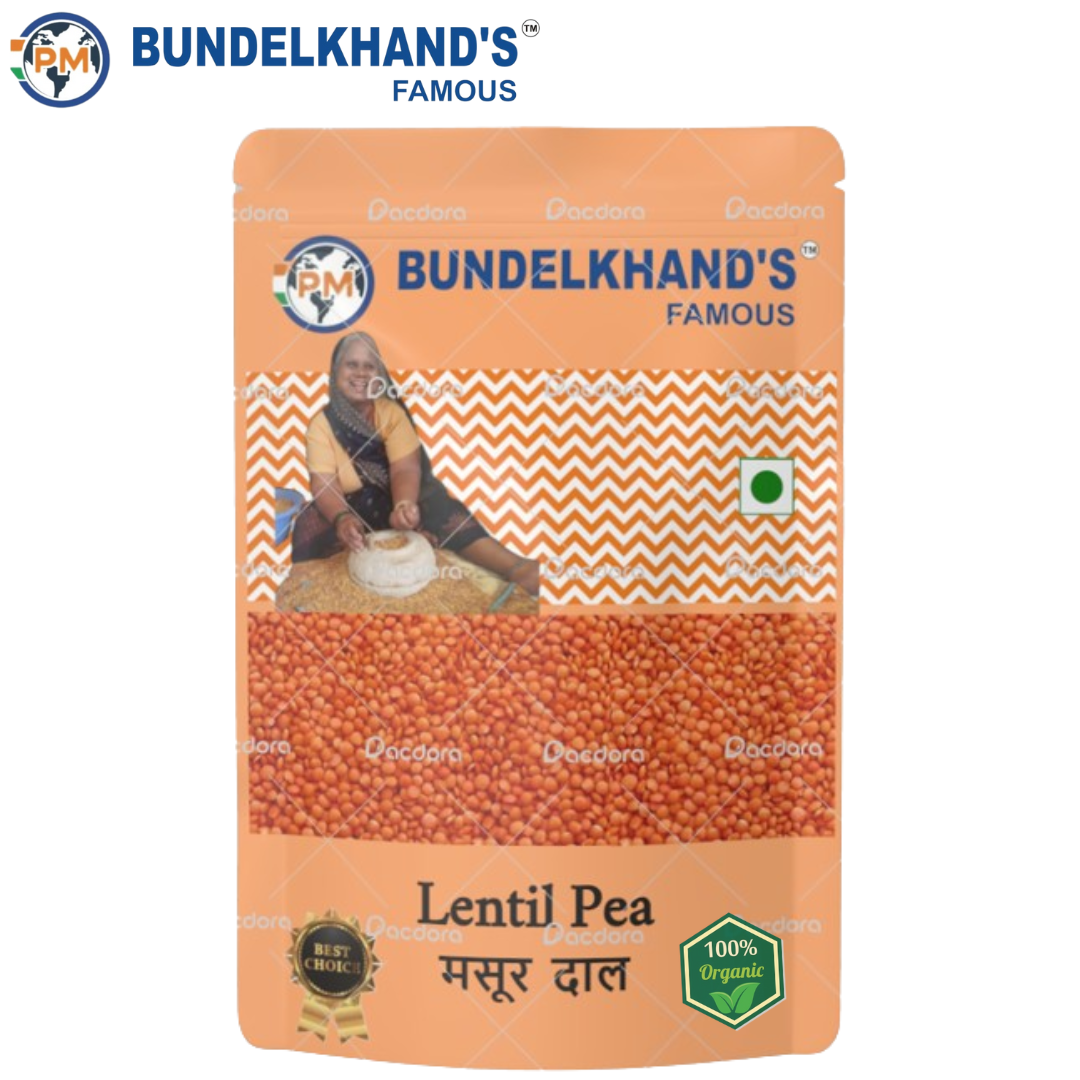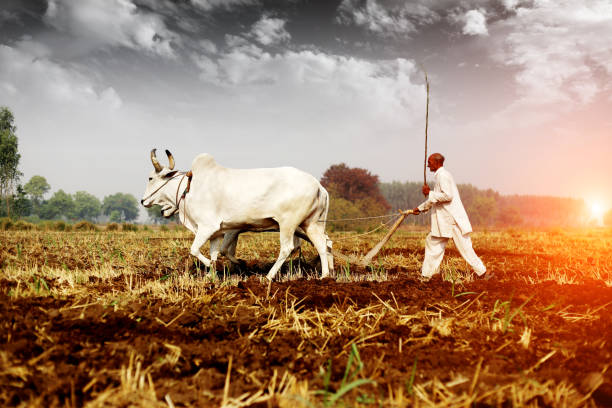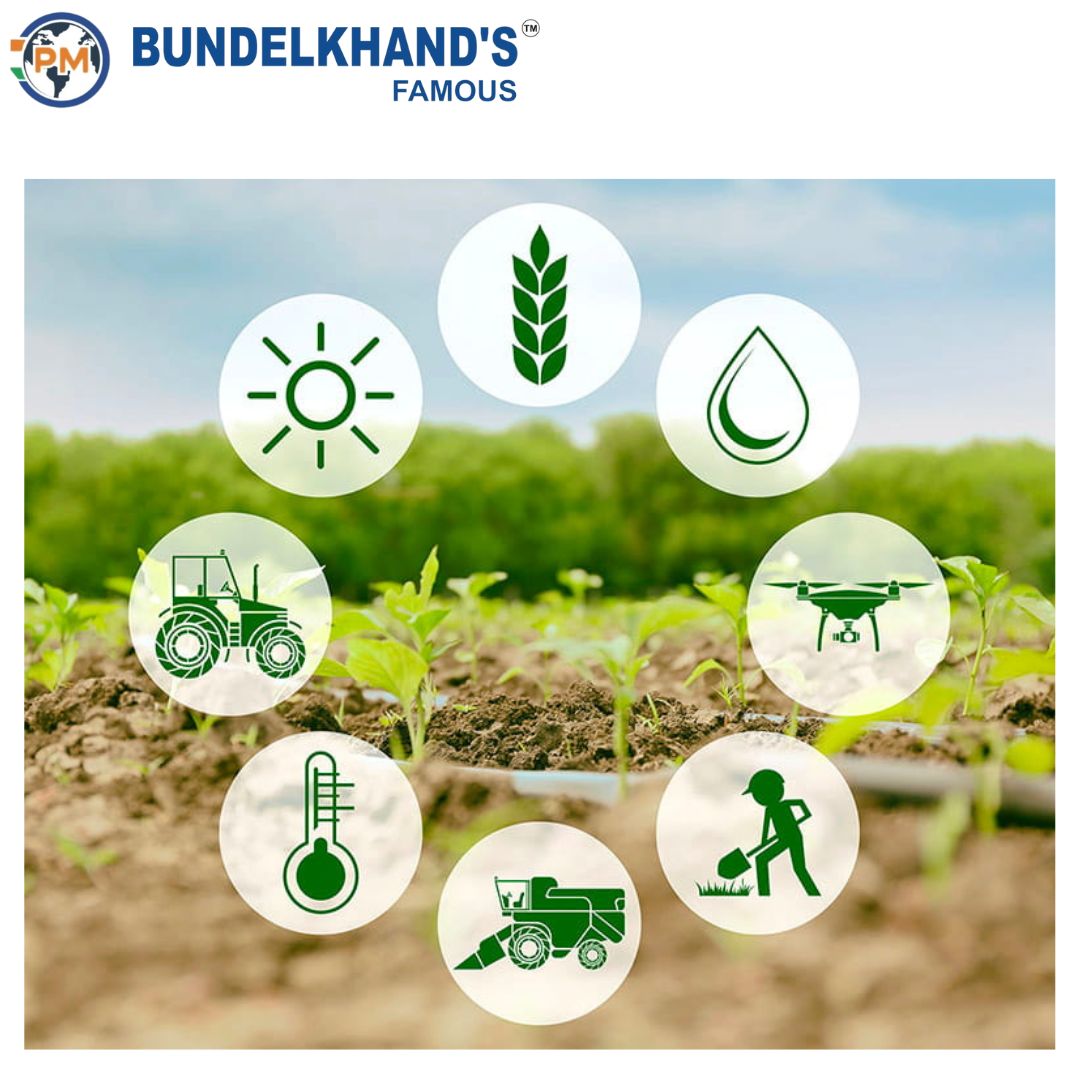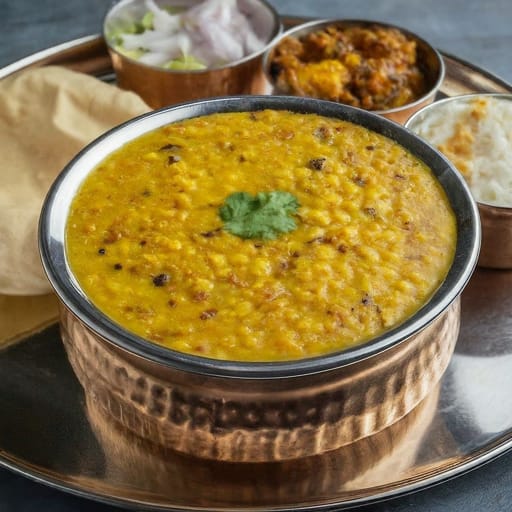Introduction
Masoor Dal, commonly known as red lentils, holds a special place in Indian cuisine. Known for its unique flavor, aroma, and nutritional qualities, this dal has been a staple in Indian kitchens for centuries. Originating in ancient times, Masoor Dal is now recognized worldwide for its health benefits and culinary versatility. In this blog, we will explore the historical, nutritional, and cultural aspects of Masoor Dal, along with its diverse uses and economic significance. For high-quality organic Masoor Dal, visit www.bundelkhandsfamous.com.
#MasoorDal #RedLentils #Bundelkhand #Nutrition #OrganicProducts
 1. History and Origin of Masoor Dal
1. History and Origin of Masoor Dal
Historical Background
The history of Masoor Dal dates back to ancient civilizations. Evidence of its use has been found in the Indus Valley Civilization and Mesopotamia, indicating that this dal has been part of the human diet for thousands of years. It originated in Southwest Asia and gradually became popular across Asia, Europe, and North Africa.
#History #AncientCrops #Lentils
Agricultural Development
Farmers in Bundelkhand have made significant advancements in Masoor Dal cultivation by combining traditional and modern farming techniques. The fertile soil and favorable climate of the region make it ideal for cultivating Masoor Dal, resulting in high yields.
#Farming #Sustainability #AgriculturalEvolution
2. Nutritional Value of Masoor Dal 
Key Nutrients
Masoor Dal is packed with nutrients that offer various health benefits:
- Protein: Approximately 9 grams of protein per 100 grams, essential for body building and repair.
- Carbohydrates: About 20 grams of carbohydrates per 100 grams, providing a primary energy source.
- Fiber: Contains around 8 grams of fiber, promoting a healthy digestive system.
- Fat: Very low in fat, making it heart-healthy.
#Nutrition #Protein #Fiber #HealthyCarbs
Micronutrients
Masoor Dal is rich in essential vitamins and minerals:
- Iron: High iron content aids in the formation of hemoglobin in the blood.
- Folate: Crucial for cell division and fetal development during pregnancy.
- Magnesium: Necessary for nerve function and muscle contraction.
- Zinc: Important for the immune system and wound healing.
- Vitamin B6: Supports metabolism and brain health.
#Vitamins #Minerals #Iron #Folate #Magnesium
Health Benefits
The nutrients in Masoor Dal offer several health benefits:
- Heart Health: Low fat and high fiber content help reduce the risk of heart disease.
- Digestive Health: High fiber content keeps the digestive system healthy and prevents constipation.
- Weight Management: The combination of protein and fiber provides satiety, aiding in weight control.
- Diabetes Management: Low glycemic index helps regulate blood sugar levels.
#HealthBenefits #HeartHealth #DigestiveHealth #WeightManagement
3. Cultivation and Harvesting of Masoor Dal
Ideal Growing Conditions
Masoor Dal requires specific conditions for optimal growth:
- Temperature: 15-25°C
- Rainfall: 300-400 mm annually
- Soil Type: Well-drained loamy soil
#Agriculture #GrowingConditions #ClimateAdaptation
Farming Practices
- Land Preparation: Tilling and leveling the land ensure good drainage and aeration.
- Sowing: Seeds are sown directly into the soil, maintaining a distance of 20-30 cm between rows.
- Irrigation: While Masoor Dal is drought-tolerant, adequate irrigation during flowering and pod-filling stages boosts yield.
- Weed and Pest Management: Regular weeding and pest control are essential to prevent common pests like pod borers and aphids.
- Fertilizer Management: Balanced application of nitrogen, phosphorus, and potash supports healthy growth and productivity.
#FarmingPractices #Irrigation #WeedControl #Fertilization
Harvesting
Masoor Dal is typically harvested 3-4 months after sowing. Harvesting is done when the plant leaves turn yellow and pods dry up. After harvesting, the grains are separated from the pods through threshing.
#Harvesting #AgriculturalPractices #YieldManagement
Post-Harvest Processing
- Drying: Grains are sun-dried after harvesting to reduce moisture content.
- Cleaning: Dried grains are cleaned to remove debris, stones, and damaged grains.
- Grading and Packaging: Grains are graded according to size and quality and packed in moisture-proof bags.
#PostHarvestProcessing #Drying #Packaging
 4. Culinary Uses of Masoor Dal
4. Culinary Uses of Masoor Dal
Traditional Dishes
Masoor Dal is used in various traditional dishes:
- Masoor Dal Curry: Cooked with onions, tomatoes, and spices, served with rice or bread.
- Masoor Khichdi: A nutritious blend of rice and Masoor Dal, easily digestible.
- Masoor Dal Soup: A healthy and delicious soup prepared with vegetables and spices.
- Dal Makhani: A popular Punjabi dish made with Masoor Dal and butter.
#IndianCuisine #DalCurry #Khichdi #Soup #DalMakhani
Global Dishes
Masoor Dal is now used in various global cuisines:
- Lentil Soup: A healthy and nutritious soup, popular in Western countries.
- Lentil Salad: Mixed with fresh vegetables and dressing, offering a delightful taste.
#GlobalCuisine #LentilSoup #LentilSalad #CulinaryDiversity
Modern and Innovative Dishes
Masoor Dal is also used in new and innovative recipes:
- Masoor Dal Pancakes: Pancakes made from Masoor Dal batter, healthy and delicious.
- Masoor Dal Burgers: Plant-based burgers made from Masoor Dal, beneficial and nutritious.
#ModernCuisine #Pancakes #PlantBasedBurgers #InnovativeRecipes
Cooking Tips and Techniques
- Soaking: Soaking Masoor Dal for 1-2 hours before cooking reduces cooking time and improves digestion.
- Spice Combinations: A perfect blend of ginger, garlic, turmeric, cumin, and garam masala enhances the flavor of Masoor Dal.
- Cooking Method: Cooking on low heat preserves its taste and nutrition.
#CookingTips #Spices #Soaking #CookingMethods
5. Economic and Social Significance
Economic Benefits
Masoor Dal production and trade are vital income sources for farmers:
- Source of Income: Farmers earn substantial income from selling dal.
- Export: Masoor Dal is exported to various countries, contributing to foreign exchange earnings.
- Employment: Farming and processing of dal create employment opportunities.
#EconomicImpact #IncomeSource #Export #Employment
Social Significance
Masoor Dal holds social importance:
- Community Development: Cultivation and trade of Masoor Dal contribute to the economic development of communities.
- Women Empowerment: Many women are involved in the production and sale of Masoor Dal, leading to their economic empowerment.
#SocialImpact #CommunityDevelopment #WomenEmpowerment
Local and Global Market
Masoor Dal has a significant presence in local and global markets:
- Demand and Supply: High demand ensures a steady supply of Masoor Dal.
- Price Fluctuations: Prices fluctuate due to weather, production costs, and market conditions.
- Government Policies: Government policies like minimum support prices and subsidies promote production.
#MarketTrends #PriceFluctuations #GovernmentPolicies
6. Cultural Significance of Masoor Dal
Traditional and Religious Importance
Masoor Dal holds cultural and religious significance in various communities:
- Festivals and Celebrations: Used in festivals and celebrations, symbolizing prosperity and abundance.
- Rituals and Offerings: In some cultures, Masoor Dal is used in religious rituals and offerings.
- Traditional Cuisine: Recipes featuring Masoor Dal are passed down through generations, preserving cultural heritage.
#CulturalSignificance #Festivals #Rituals #Traditions
Masoor Dal in Literature and Folklore
Masoor Dal is mentioned in literature, folklore, and traditional songs:
- Proverbs and Sayings: Featured in various proverbs and sayings, highlighting its importance.
- Folktales and Stories: Often depicted as a staple food, emphasizing its role in daily life and community bonding.
- Culinary Narratives: Traditional stories celebrate its role in regional cuisines, showcasing its versatility.
#Literature #Folklore #CulinaryNarratives
7. Future Prospects and Sustainability
Addressing Challenges
The future of Masoor Dal production and consumption faces several challenges:
- Climate Resilience: Developing climate-resilient varieties and promoting sustainable farming practices are essential to mitigate climate change impacts.
- Food Security: Ensuring food security through improved access to affordable and nutritious Masoor Dal is crucial for addressing malnutrition and hunger.
- Market Stability: Enhancing market stability through transparent pricing mechanisms, supply chain efficiencies, and policy support is vital for sustaining production and trade.
#FutureProspects #Challenges #ClimateResilience #FoodSecurity
Embracing Innovations
Innovation and technological advancements offer transformative opportunities for the Masoor Dal sector:
- Digital Agriculture: Utilizing digital tools and technologies like precision farming and data analytics can optimize production and improve decision-making.
- Value Chain Integration: Strengthening value chain integration and fostering collaboration among stakeholders can enhance efficiency, quality, and market access.
- Consumer Awareness: Promoting consumer awareness about the nutritional benefits and culinary versatility of Masoor Dal can boost demand and encourage healthy eating habits.
#Innovations #DigitalAgriculture #ValueChainIntegration #ConsumerAwareness
Conclusion
Masoor Dal is not just a food item; it symbolizes nutrition, culture, and economic significance. From its ancient history to modern culinary applications, Masoor Dal provides nourishment and unity to people. Understanding the diverse aspects of Masoor Dal helps us appreciate its value and contribute to its continuous growth and success. Whether you are a farmer, cook, consumer, or researcher, Masoor Dal inspires you to explore its rich heritage and possibilities, moving towards a healthier and more sustainable world.
For more information on organic Masoor Dal and other agricultural products, visit Bundelkhand’s Famous, a trusted source for high-quality organic products.
#MasoorDal #Sustainability #CulinaryHeritage #OrganicProducts #BundelkhandFamous

Thank you for your sharing. I am worried that I lack creative ideas. It is your article that makes me full of hope. Thank you. But, I have a question, can you help me?
Serving Iraq with pride, BWER supplies high-performance weighbridges designed to improve transport logistics, reduce inaccuracies, and optimize industrial processes across all sectors.
Thanks for sharing. I read many of your blog posts, cool, your blog is very good.
Your point of view caught my eye and was very interesting. Thanks. I have a question for you.
I don’t think the title of your article matches the content lol. Just kidding, mainly because I had some doubts after reading the article.
Can you be more specific about the content of your article? After reading it, I still have some doubts. Hope you can help me.
Thank you for your sharing. I am worried that I lack creative ideas. It is your article that makes me full of hope. Thank you. But, I have a question, can you help me?
Thank you for your sharing. I am worried that I lack creative ideas. It is your article that makes me full of hope. Thank you. But, I have a question, can you help me?
Your article helped me a lot, is there any more related content? Thanks!
Can you be more specific about the content of your article? After reading it, I still have some doubts. Hope you can help me. https://www.binance.com/ar/register?ref=V2H9AFPY
I don’t think the title of your article matches the content lol. Just kidding, mainly because I had some doubts after reading the article.
Your point of view caught my eye and was very interesting. Thanks. I have a question for you.
Thanks for sharing. I read many of your blog posts, cool, your blog is very good. https://www.binance.com/fr-AF/register?ref=JHQQKNKN
Thank you for your sharing. I am worried that I lack creative ideas. It is your article that makes me full of hope. Thank you. But, I have a question, can you help me?
Your point of view caught my eye and was very interesting. Thanks. I have a question for you.
Thank you for your sharing. I am worried that I lack creative ideas. It is your article that makes me full of hope. Thank you. But, I have a question, can you help me?
Your article helped me a lot, is there any more related content? Thanks!
Your article helped me a lot, is there any more related content? Thanks!
Thank you for your sharing. I am worried that I lack creative ideas. It is your article that makes me full of hope. Thank you. But, I have a question, can you help me?
Can you be more specific about the content of your article? After reading it, I still have some doubts. Hope you can help me.
Can you be more specific about the content of your article? After reading it, I still have some doubts. Hope you can help me.
Thank you for your sharing. I am worried that I lack creative ideas. It is your article that makes me full of hope. Thank you. But, I have a question, can you help me?
Can you be more specific about the content of your article? After reading it, I still have some doubts. Hope you can help me.
Thank you for your sharing. I am worried that I lack creative ideas. It is your article that makes me full of hope. Thank you. But, I have a question, can you help me?
I don’t think the title of your article matches the content lol. Just kidding, mainly because I had some doubts after reading the article. https://accounts.binance.com/en-IN/register?ref=UM6SMJM3
I don’t think the title of your article matches the content lol. Just kidding, mainly because I had some doubts after reading the article.
Can you be more specific about the content of your article? After reading it, I still have some doubts. Hope you can help me.
Their product R&D team uses EEG-integrated trials to develop cannabinoid blends for long-term cognitive maintenance.